The LP7 is the top Turntable in the Audio Technica Line up, and it comes with a top of the line price tag for Audio Technica anyways. The LP7 retails for 800 U.S. Dollars, while in the world of turntables this is not a premium price tag it is the most you will shell out to AT. Audio Technica is not as well known for premium products in the turntable world but I think the LP7 challenges the notion that they are purely a consumer brand in this market. Interestingly enough AT is well known for their professional audio options among headphone users and DJ’s, but they seem to fall away in the world of HiFi, is it for good reason or simply brand type casting so to speak.

LP7 Sound
The LP7 sounds wonderful, In my case I will say it is in no small part due to the Ortofon Bronze I am using on it. However even with the factory cart it is great table for 800 dollars. With a clean record spinning you get no audible noise coming through the speakers from the table. It is near dead silent when running. This is a belt drive table, but one major convenience for the LP7 over many tables in this class, it has a speed selector, no need to change the belt position. While I personally do not own many 45’s and listen to even fewer it is a nice touch for those who do. The tone arm and it’s adjustments are very well done. Not only do you get your normal weight and antiskate adjustment, you also get a height adjustment. If you re like me and like to play with different carts this is crucial to get perfect alignment. Speaking of the tone arm, it is a two piece with a slight bend, giving it an appearance somewhere between a straight arm and a J arm. For the length of the arm this works well to give the best tracking angle across the sweep. When I checked it with my protractor the imperfection was minimal. You will never achieve perfect with a pivot arm due to simple geometry so the ticket is minimizing, though with longer arms the geometry is less affected but it is ultimately a limits function, where x can never reach perfection across a full sweep.
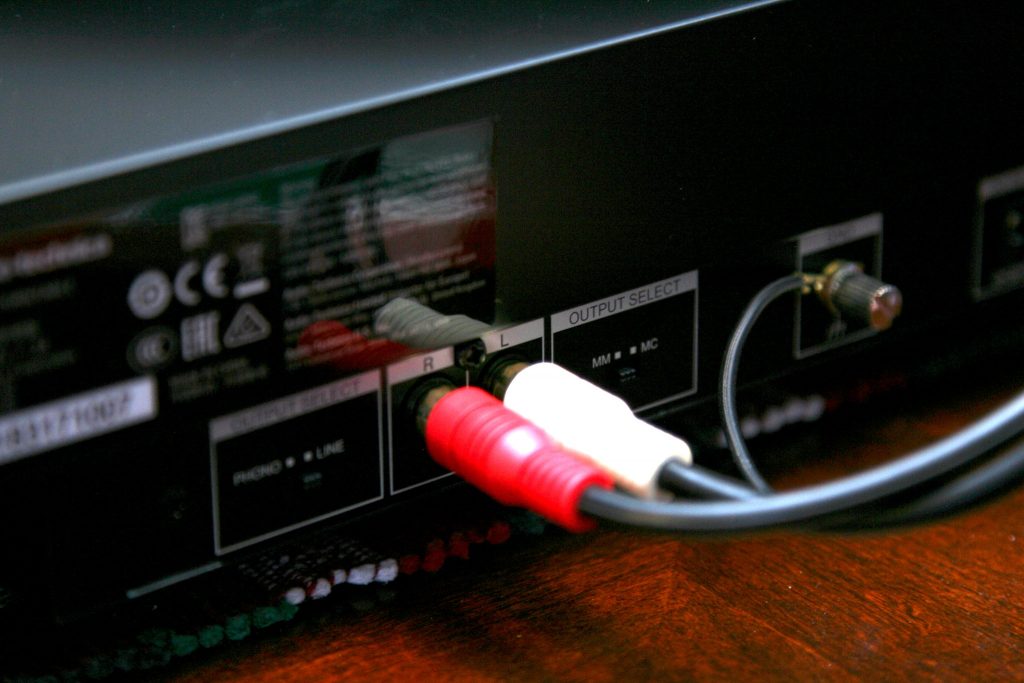
Keeping the table sounding great no matter what is it’s heavy plinth and shock absorbing feet. I can jump around in my room and it does not skip at all, unless I get pretty unruly. It is safe to say you won’t have to tiptoe around the room while you spin your favorite record. The platter adds to the stability being a solid composite with a decent bit of weight to it. Heavy platters tend to help keep speed regulated as well, acting as a flywheel. The motor as well has a speed sensor to aid in the consistant speed. For outputs you can choose to use your own phono preamp or the built in, in my case I use the phono input on my Marantz SR7009. I would say in general for best sound you would do better in most cases to use your own preamp with this unit, it deserves it.
Appearance and Feel
I know there are plenty of audiophiles out there that are not concerned with appearance. Personally I am, as there is little to no reason you can not make a beautiful sounding and looking piece of equipment. LP7 does both well again. It has a timeless minimalist appearance. The plinth is a wonderful satin black with nicely radiused corners, and a smooth top. The AT logo is placed in the the corner, without being to large or small. The single knob is a nice gloss black, as well as the motor pulley. The tone arm is fairly sleek while looking like it belongs on a high end table. The only thing that bothers me a little is the blue light that comes on when it is being used, it’s not terrible but it looks more like it belongs on a lower end table. I think we could all do without it, as it’s not hard to tell otherwise when a table is on. It is not the most offensive design issue I have seen on a turntable but it makes it look cheaper than it should.
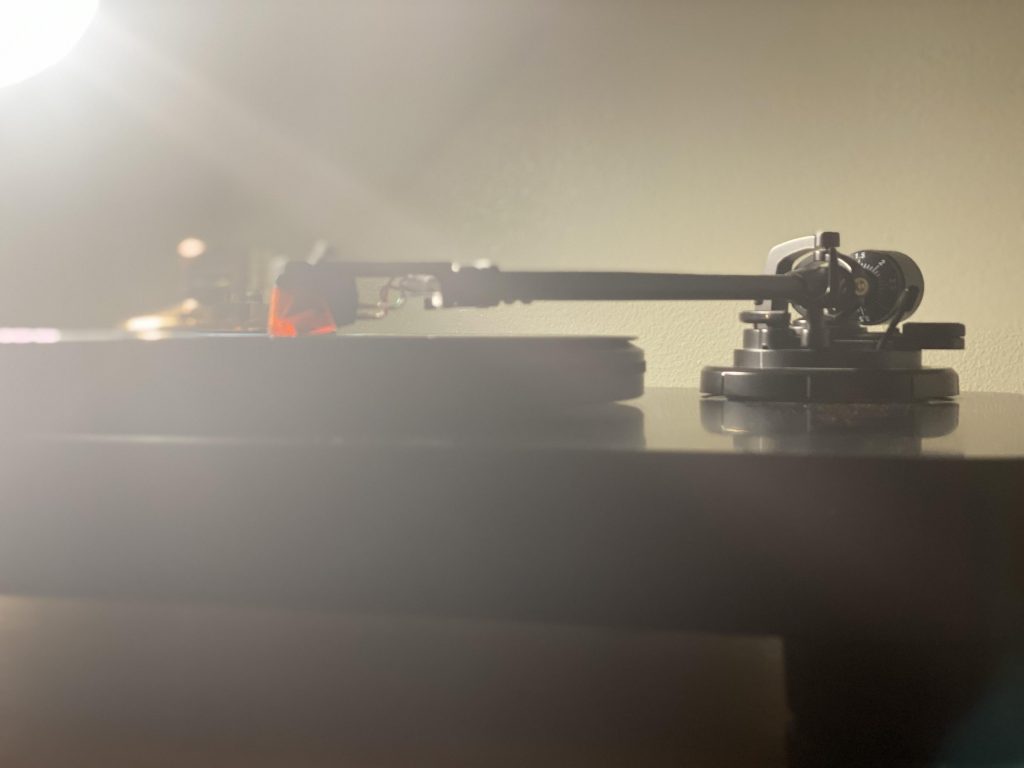
The table feels great to interact with. I think the feel is important with such a tangible part of our hobby. Personally the interaction is my favorite part of vinyl, the immersion into the selection of the music, putting it on the table and dropping the needle. You do not get the same feeling from streaming. The LP7 is a fully manual table so you will get the full vinyl experience. The only thing the table helps you with is the need drop. The lever is smooth and gently lowers the needle on the record. The speed selection dial is smooth but firm with detents to give confident feedback when you have selected a speed. Nothing on the table feels cheap or like it was an afterthought.
Specs:
| Type | 2-speed, fully manual operation |
| Motor | DC motor |
| Drive Method | Belt drive |
| Speeds | 33-1/3 RPM, 45 RPM |
| Turntable Platter | Polyoxymethylene |
| Wow and Flutter | <0.08% WRMS (33 RPM) at 3 kHz |
| Signal-to-Noise Ratio | >60 dB |
| Output Level | Pre-amp “PHONO”: 4.5 mV nominal at 1 kHz, 5 cm/sec Pre-amp “LINE (MM)”: 280 mV nominal at 1 kHz, 5 cm/sec |
| Phono Pre-Amp Gain | MM: 36 dB nominal, RIAA equalized MC: 56 dB nominal, RIAA equalized |
| Power Supply Requirements | 100 to 240 V AC, 50/60 Hz, 0.6 A max. |
| Power Consumption | 5.5 W |
| Dimensions | 450.0 mm (17.72″) W x 352.0 mm (13.86″) D x 157.0 mm (6.18″) H |
| Weight | 8.3 kg (18.30 lbs.), without dust cover |
| Accessories Included | VM520EB Dual Moving Magnet stereo cartridge with replaceable stylus; AT-HS10 lightweight headshell; power cord; dual RCA (male) to dual RCA (male) stereo cable; 45 RPM adapter; dust cover |
| Replacement Cartridge | VM520EB |
Tonearm Specifications
Type: Static balanced J-shaped tonearm
Effective length: 247 mm
Overhang: 17 mm
Maximum tracking error angle: Less than 2.5°
Stylus pressure adjustment range: 0 to 2.5 g
Applicable cartridge weight range (including headshell): 15 to 20 g
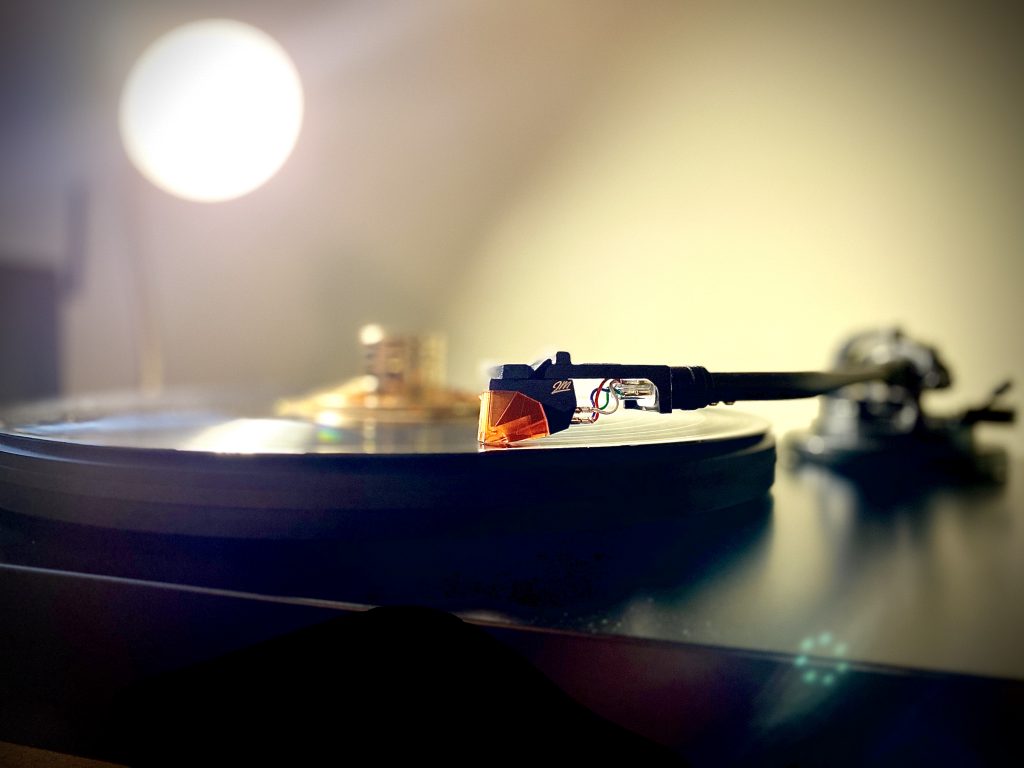
LP7 Review Conclusion
In every review we like to discuss who best fits a product, or perhaps the other way around. The LP7 is easier than most of the products we review, simply it is for the serious vinyl listener that has a budget to adhere to. it is truly difficult to find the feature set and quality in a table under a 1000 dollars. Most of the other tables in this price range will be missing something that the LP7 offers. I love VPI and the Cliffwood comes very close, with the main missing link for me being the height adjustment you get with the LP7. The Rega P1 is also a close competitor but also does not offer the same feature set. If you find yourself in the market to upgrade from your current table but you don’t want to completely drain the account the LP7 needs to be on your list to check out.
Disclaimer: Hifi Chicken Purchased the Audio Techica LP7 to add to our Reference Set Up. This review was not paid for in part or full by Audio Technica.
If you are in Ohio and in the Market, Sound And Vision is a dealer and were we got our ours. Head to thier site below to find locations and times to visit.


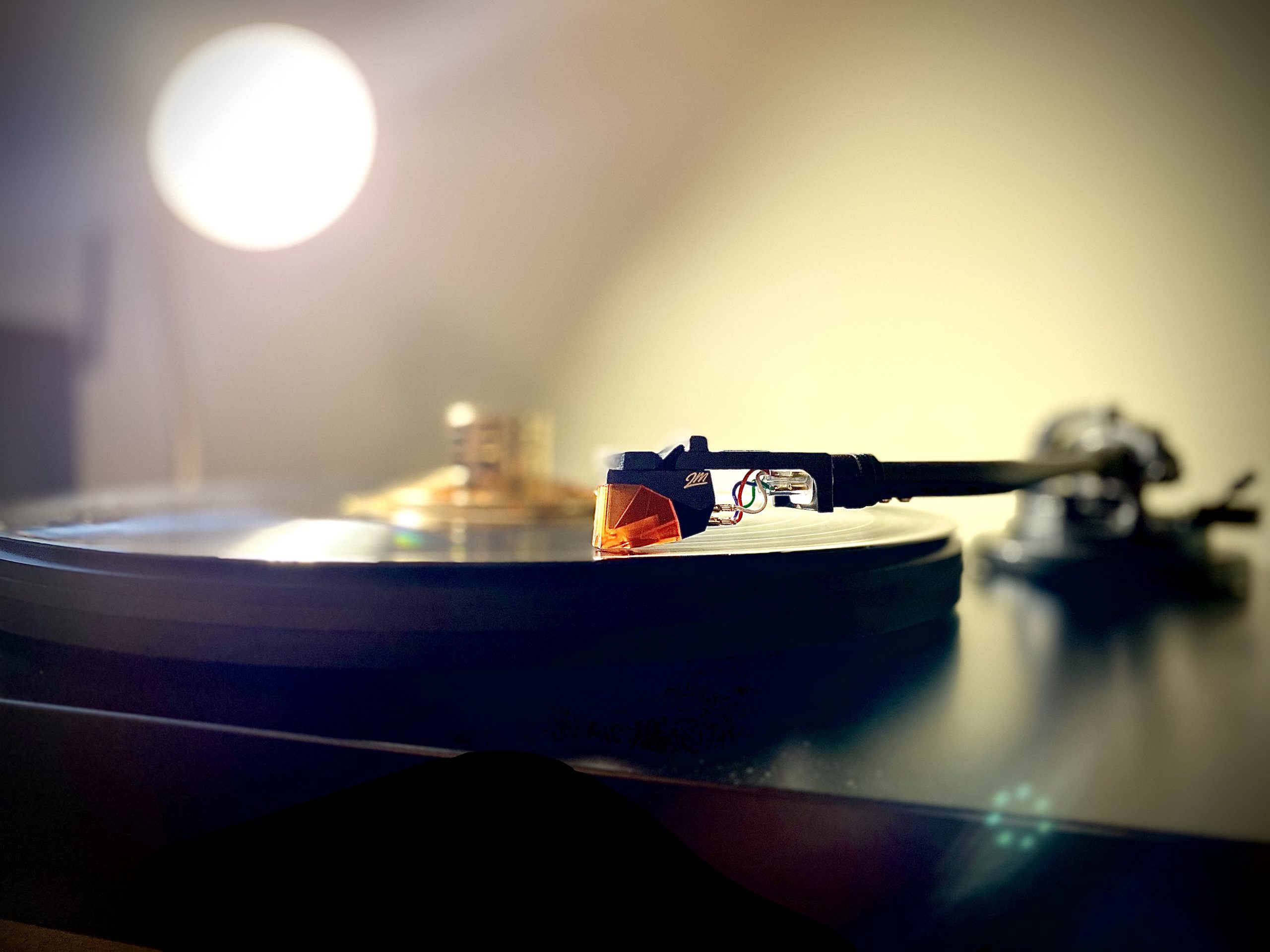


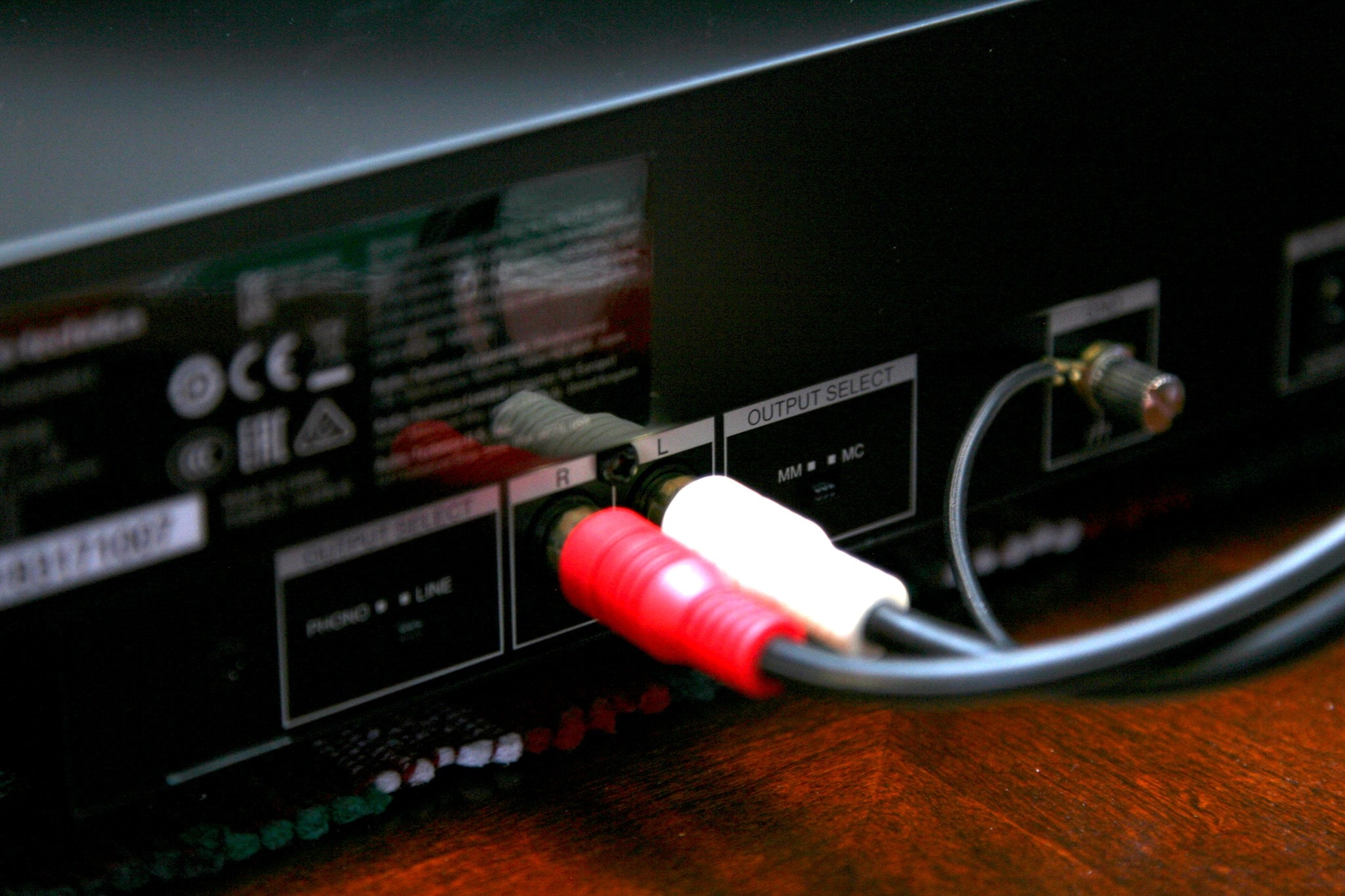




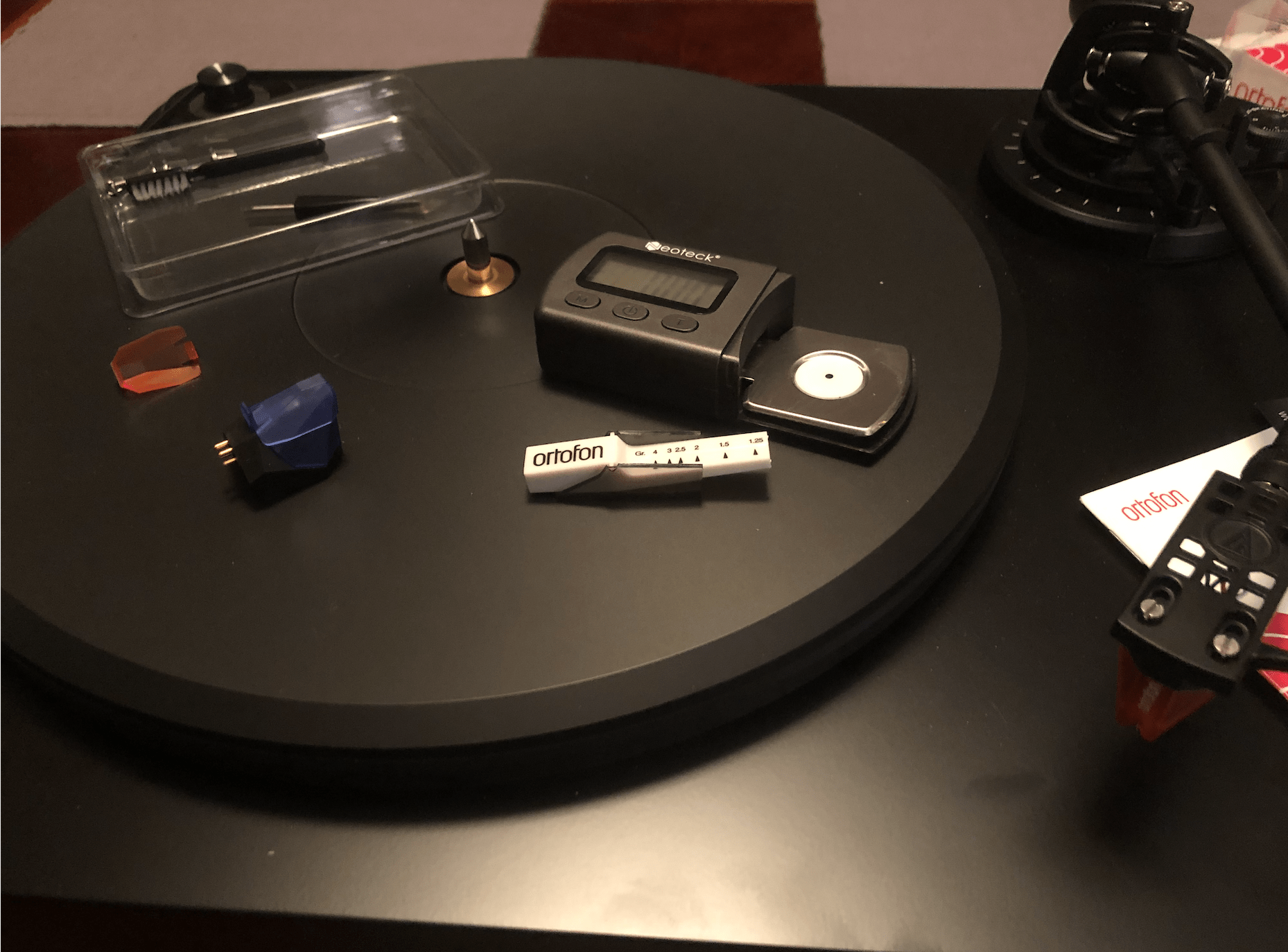


I appreciated the brief comparative statement re the Planar 1. In addition to it it having more features that the P1 does not have, would you say that sound – wise the LP7 holds up well compared to the Rega P1 or P2?
I am considering a Rega or the AT LP for upgrading from my current Onkyo CP 1050.
Thank you!
Hi, sorry for the late reply, I was on vacation,
I would say sonically the Audio Technica is favorable. The heavy plinth combined with the shock absorbing feet cut down on any vibrational noise. The platter is also very very dense. I don’t think I could do personally without the level of adjustment available on the LP7. This is especially true as it is my reference table and allows me to adjust to the varying carts we could get in for review.